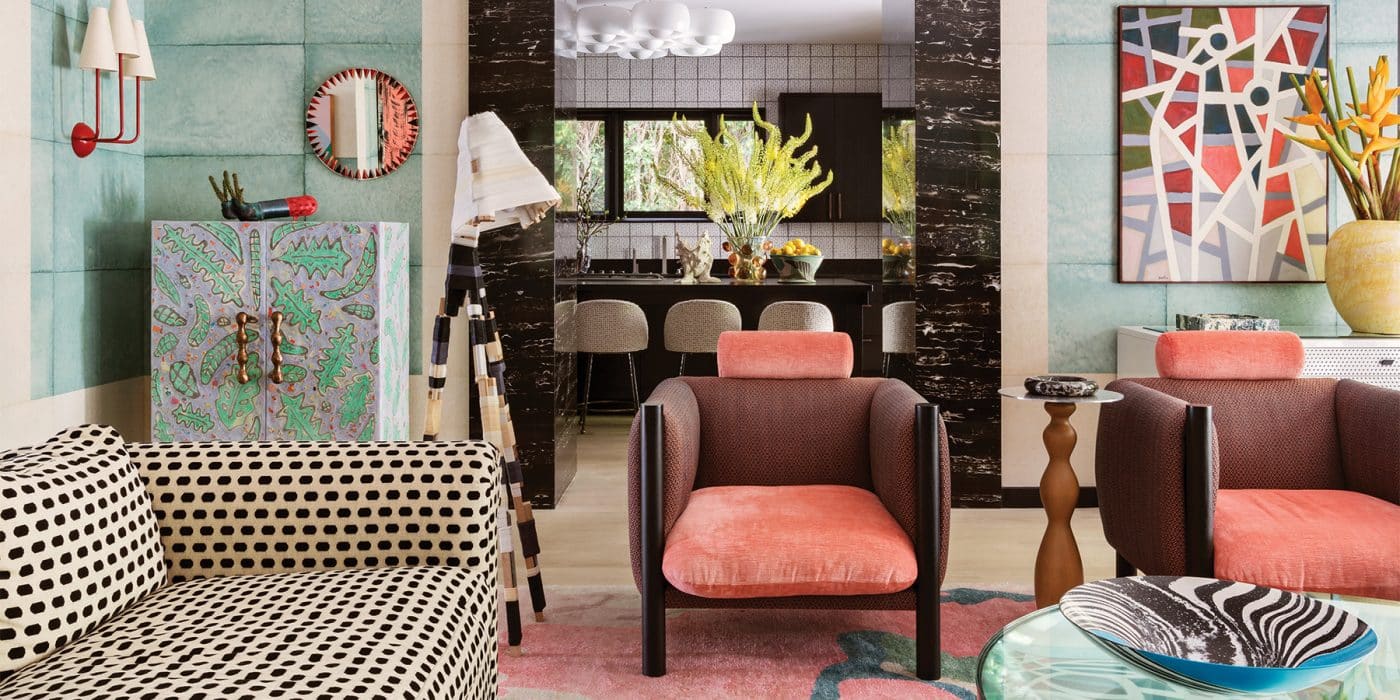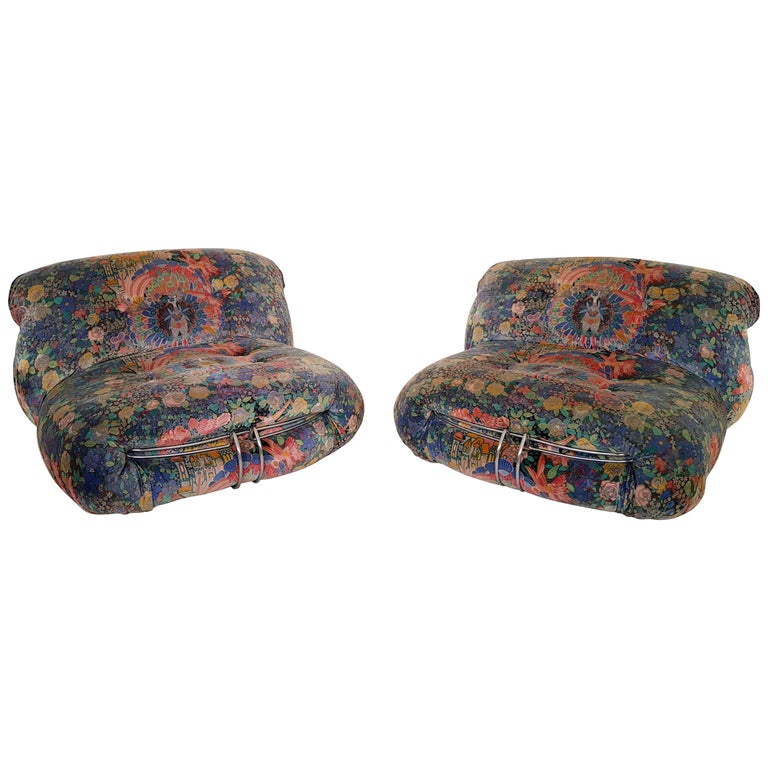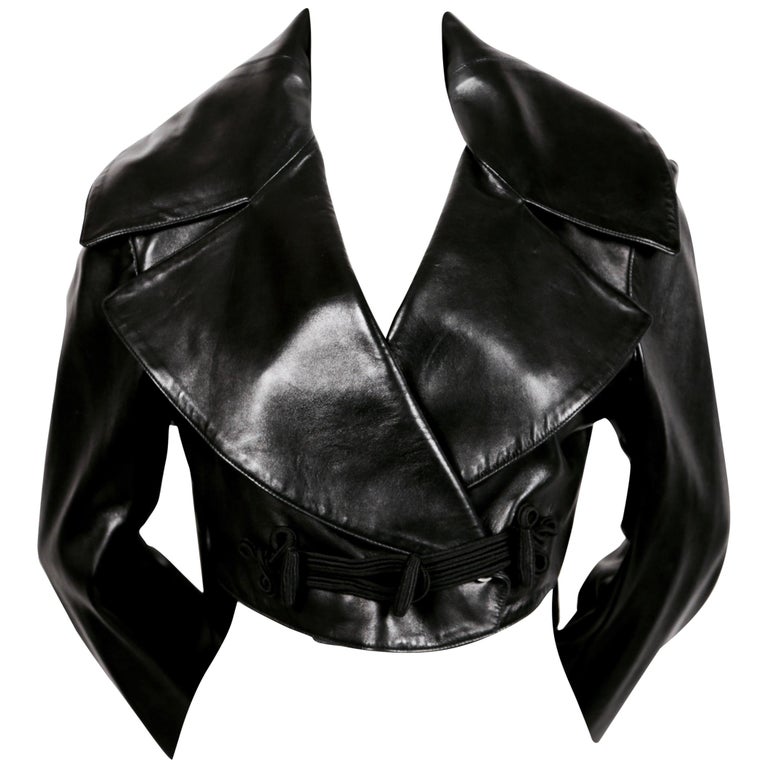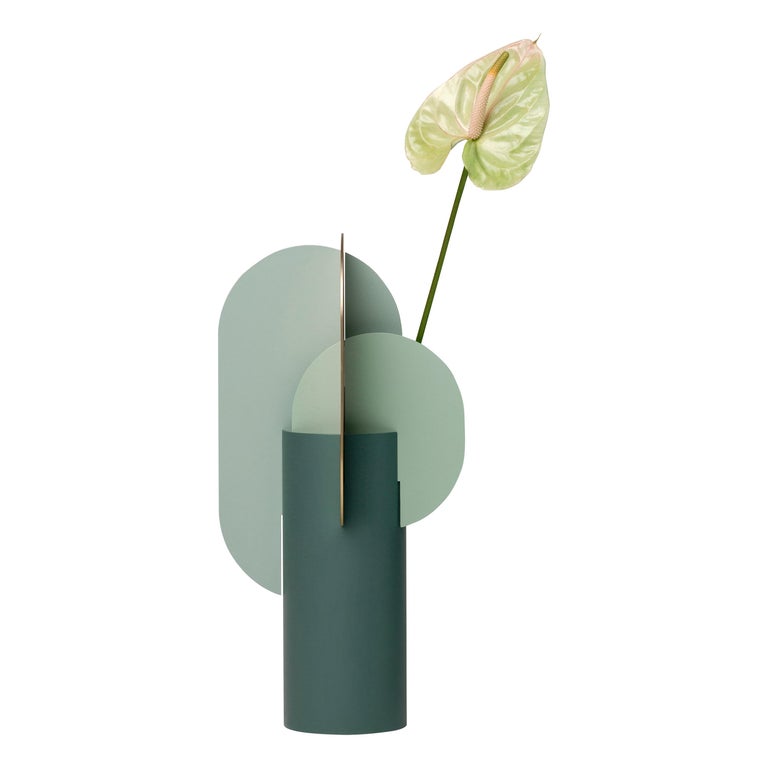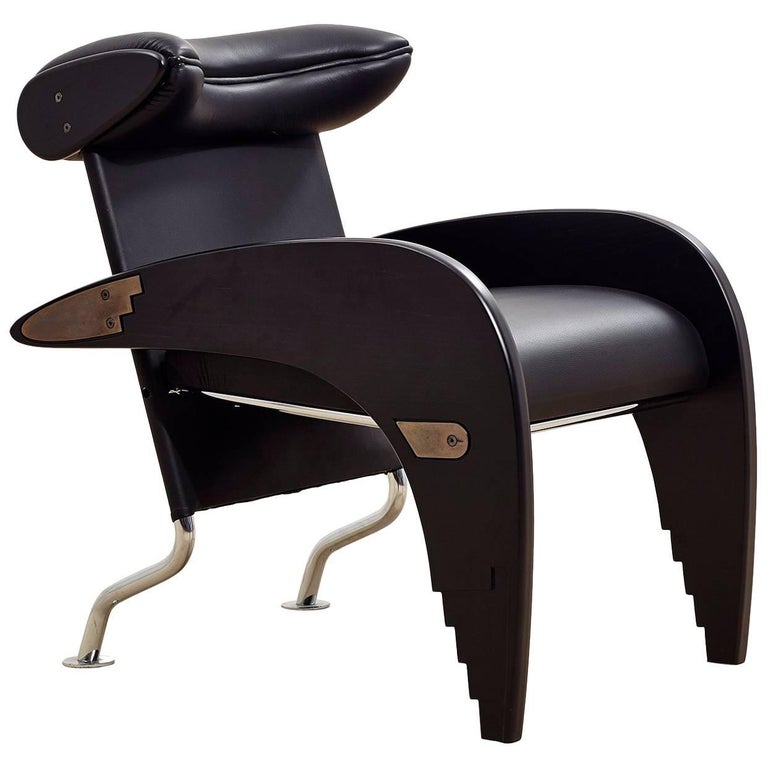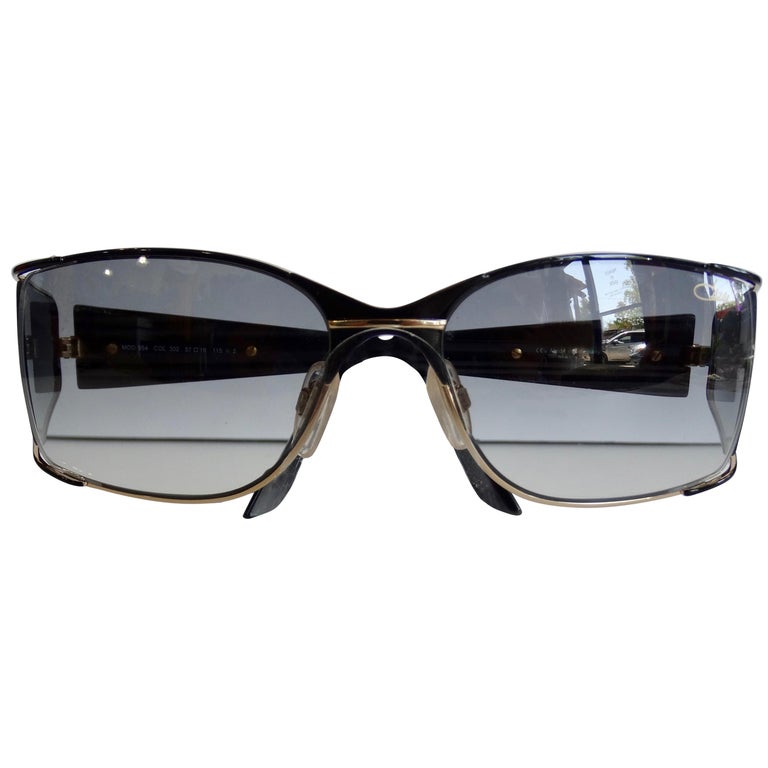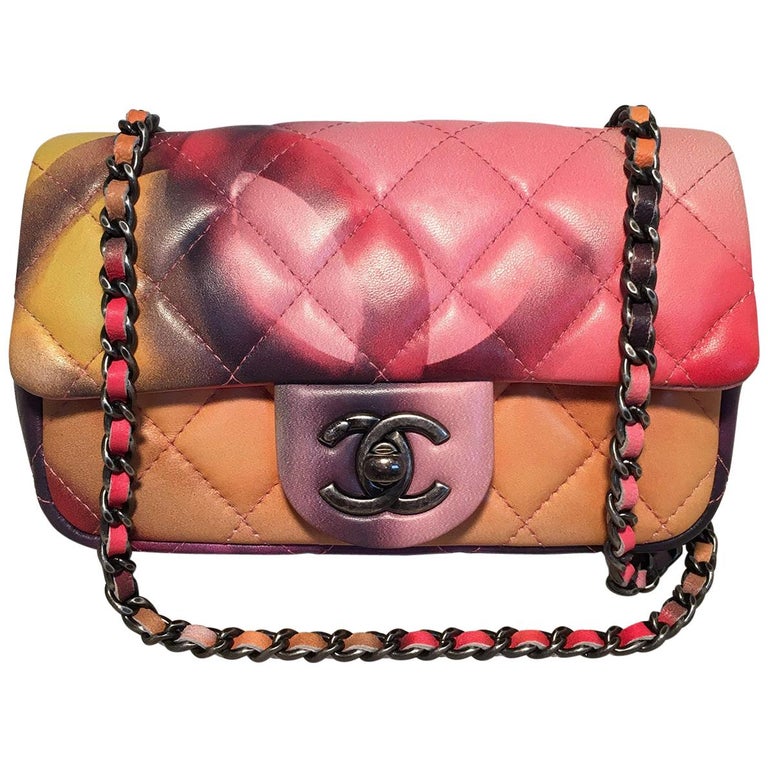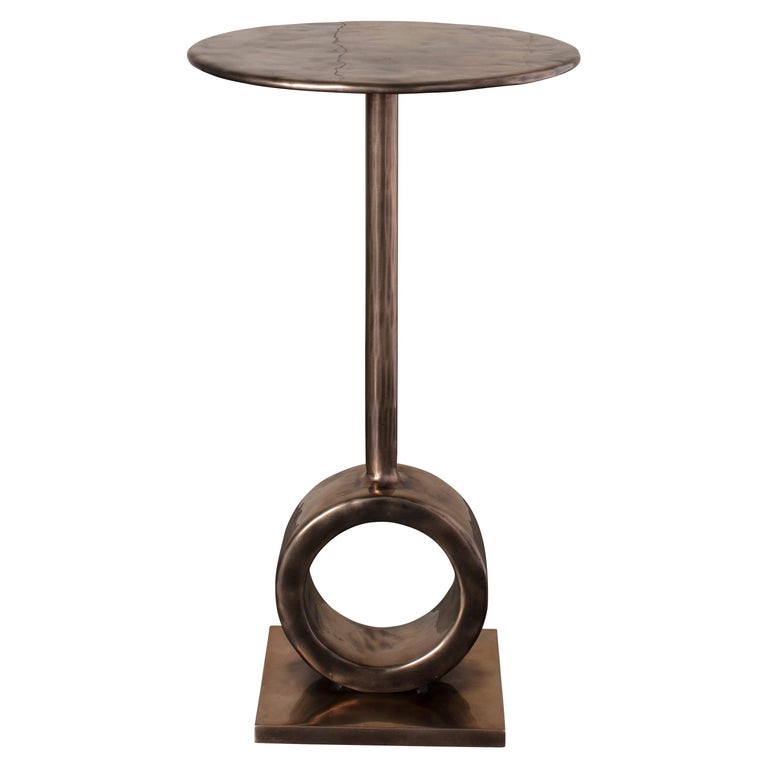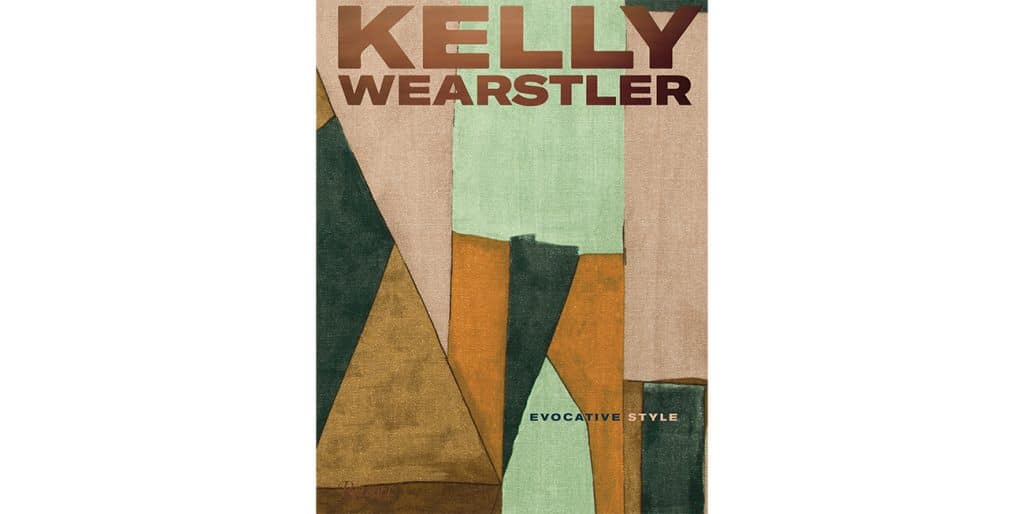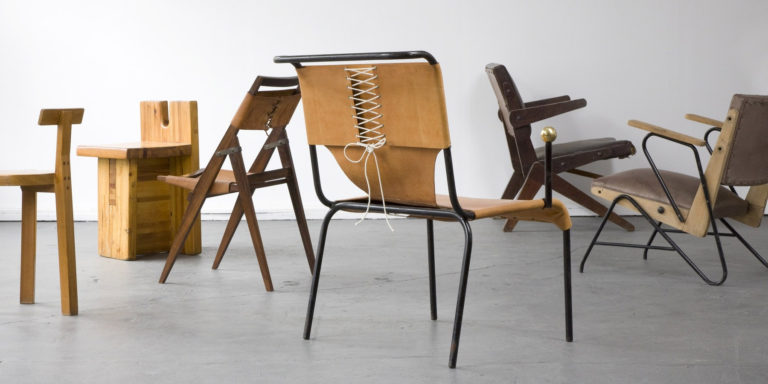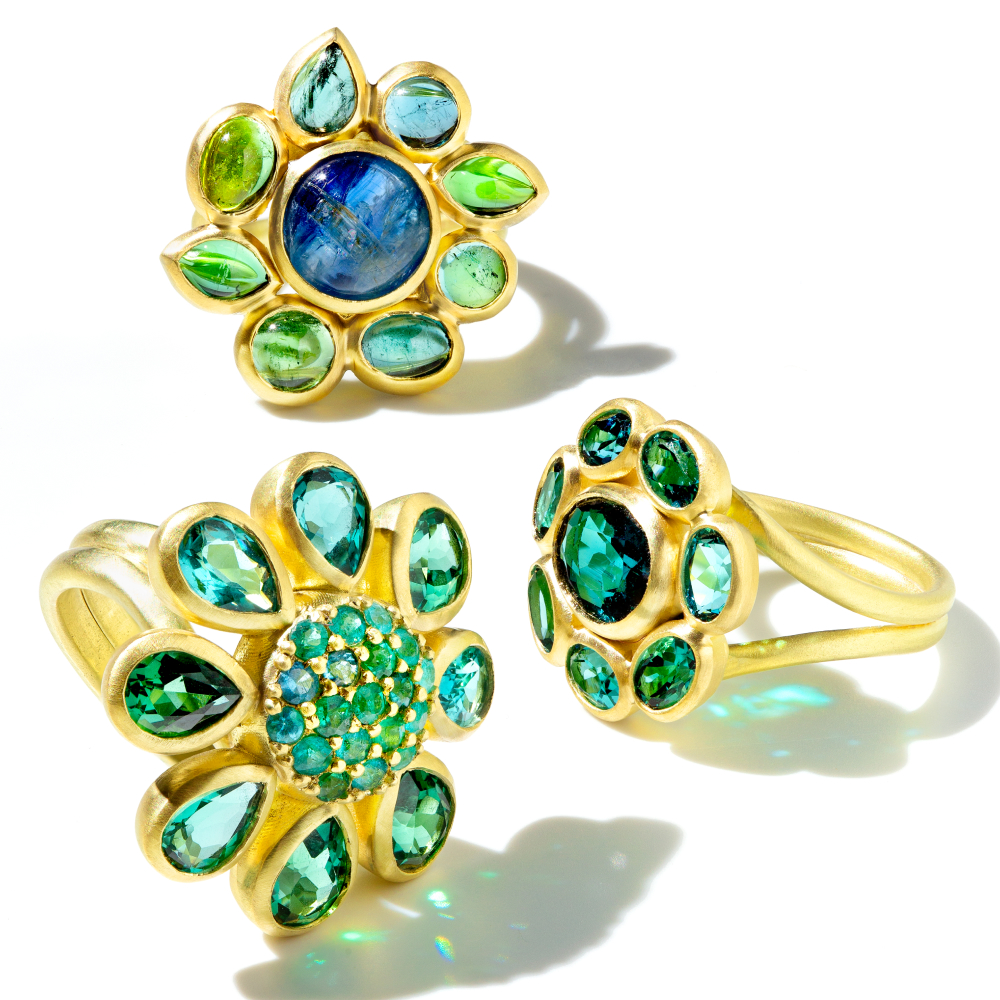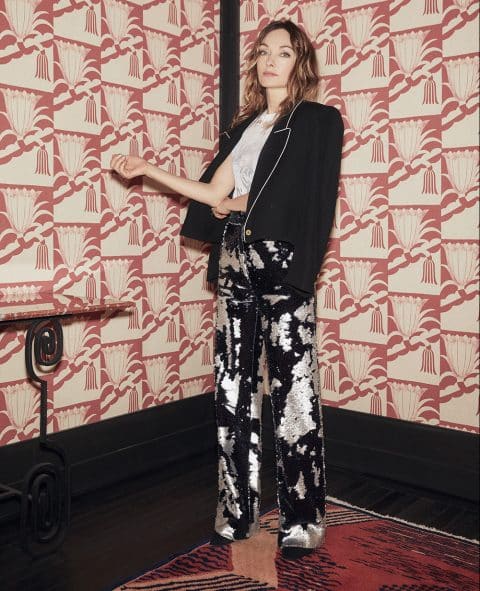
October 6, 2019“My aesthetic has always been about mixology,” says designer Kelly Wearstler, “the juxtaposition of contemporary and classic, masculine and feminine, raw and refined.” Wearstler has just released a new book, Kelly Wearstler: Evocative Style, which includes her work on a California bungalow (top) furnished with vintage pieces by the likes of Ettore Sottsass, Verner Panton and Jean Royère, plus contemporary creations by Katie Stout, Misha Kahn and Anton Alvarez. All photos courtesy of Kelly Wearstler
There are enterprising designers, and then there are empire builders. When Kelly Wearstler started her namesake business, in 1995, she worked alone out of her Los Angeles apartment. “Sixteen-hour days, seven days a week,” she recalls. “The studio has truly grown organically over the years.”
Today, Wearstler presides over a behemoth, many-tentacled enterprise. One part is involved with residential interior design for such high-profile clients as Cameron Diaz, Gwen Stefani and Ben Stiller. There is also a team dedicated to hospitality design, including for projects like the recently opened Proper Hotels’ properties — developed by her husband, Brad Korzen’s Kor Group — in Austin and Santa Monica. Then, there are her ever-expanding product designs in a multitude of categories: This year, she added new carpets and runners to her collection with the Rug Company, collaborated with Georg Jensen on a tableware and centerpiece collection and partnered with Ann Sacks on a line of encaustic tiles and with Lee Jofa on a line of fabrics and wallcoverings, with an even newer collection due out early next year. Each season sees fresh additions to Wearstler’s lighting lines, as well.
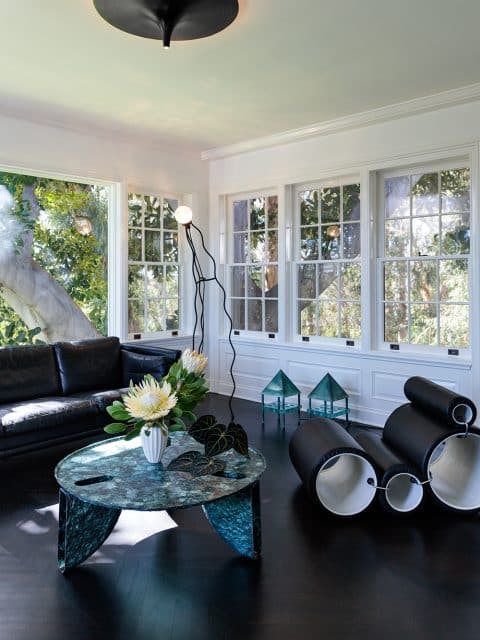
What Wearstler describes in the book as “a tree-house-like sitting room” adjacent to her own Los Angeles home’s master bedroom features a mid-century Børge Mogensen sofa, a Joe Colombo lounge chair and a table by Ross Hansen.
Wearstler also has a storefront on 1stdibs where she sells a mix of her own furniture and lighting designs and a curated selection of pieces of different styles and periods, like early-20th-century horn chairs and a 1980s acrylic coffee table. And if that weren’t enough, she’s just released her fifth monograph, Kelly Wearstler: Evocative Style (Rizzoli).
As one flips through the pages of the book, they seem at first to reveal a Kelly Wearstler entirely different from the one discovered in the earlier monographs, such as her first, Modern Glamour (Regan Books), from 2004. The interiors in that volume abounded in reflective surfaces, bright colors and pastels, decorative wall treatments, sculpted valances and pelmets and fashion details. Wearstler herself was pictured throughout in couture outfits, striking poses in rooms she designed or sifting through bolts of fabrics in a trade showroom.
Her work back then was classified as the new Hollywood Regency — much to Wearstler’s dismay. It’s easy to understand her reaction. Although the glam quotient of her projects jibed with the style, her aesthetic was far more sophisticated than that of the many wannabe designers who were merely peddling Dorothy Draper and William Haines retreads.

A large window in the living room of Wearstler’s home affords views of the pool, pool house and garden. Wearstler writes that she selected furnishings for the space that “span decades and style eras, from contemporary sofas to vintage European pieces from the ’50s, ’60s, and ’80s, accented by carefully chosen works of art.”
In contrast to those earlier interiors, the ones in Evocative Style are daring and a little dark. Wearstler pushes the envelope with artist-made furniture and lighting that can seem spiky, naked or raw. Her palette has deepened, too. The interiors feel erudite and more substantial, the room layouts like sculptural forms assembled in a tense conversational dynamic. “Each project is a unique exploration of curiosity and experimentation that leads to a constant evolution,” says Wearstler. “With every new project comes a different context and set of parameters, and new and interesting passions, art forms and interests.”

Wearstler added the black marble fireplace that faces the living room window. Opposite it are a pair of angular, vintage Dolores chairs by dutch designer Rob Eckhardt. The painting on the rear wall is by Los Angeles– and Boise, Idaho–based artist Len Klikunas.
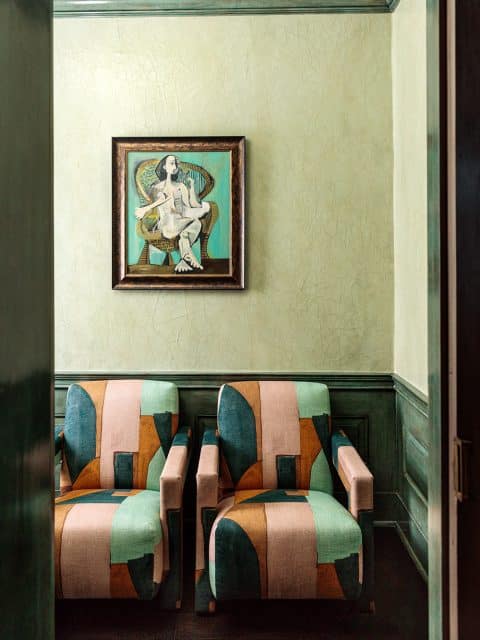
Sitting in the vestibule of a powder room in Wearstler’s home is a pair of Utrecht chairs by Dutch architect Gerrit Rietveld that she upholstered in her own geometric District fabric.
In the latest interiors, she is drawn to furniture that is boldly scaled and, often, graphically patterned, mixing such pieces with one-off creations by artist designers like Roland Mellan, Lindsey Adelman, Katie Stout, Misha Kahn, Entler Studios, Susan for Susan and Anton Alvarez. “For me, it is the power of the line,” says Wearstler. “I think it goes back to my love for graphic design. There is so much strength and beauty in the simple line. Pair this with geometries and artisanal fabrication, beautiful materiality and you have exceptional pieces of furniture. In essence, furniture as sculpture.”
Of course, no matter how distinct in style, both the early and most recent work springs from the same impulse. Wearstler’s signature approach to interiors has been described as marching right up to “over the top” then taking a step back. It exemplifies Jean Cocteau’s dictum: “Tact in audacity is knowing how far you can go without going too far.” In that sense, Wearstler is doing what she has always done, albeit in a more confident way, with bigger budgets, a larger proportion of important furnishings and art and more of her own designs. The Hollywood glamour that got her noticed decades ago toed the same elusive line of good taste that her blend of blue-chip pieces, Memphis Group furniture and challenging works by emerging artist-designers does today.
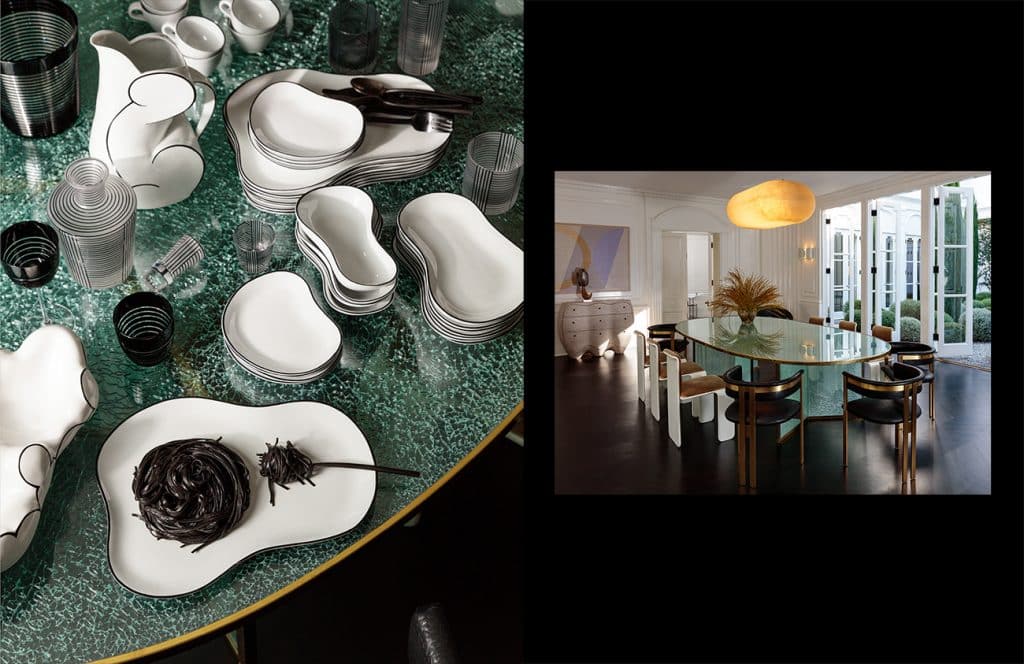
Left: Josef Hoffmann glassware mixes with dishware by Arizona-based ceramic artist Sam Chung on a table in Wearstler’s home. Right: In the dining room, Wearstler hung a Puffball pendant lamp by Faye Toogood over her own Fractured Glass dining table, which is surrounded by her Elliott dining chairs.
“My aesthetic has always been about mixology,” Wearstler explains, “the juxtaposition of contemporary and classic, masculine and feminine, raw and refined. Important vintage and soulful historical reference points that lend such spirit to a space. And I’m always discovering new artists, new forms of expression and fine-tuning my own eye and approach to creating distinctive spaces.”

In a townhouse just off New York’s Central Park, a “custom-designed upholstered leather bed, in a soothing shade of blue, anchors a young girl’s light-filled, south-facing bedroom,” Wearstler writes.
So, however stark the contrast appears between the two monographs — and between Wearstler’s work then and now — the sensibility remains consistent. Asked to describe the constants in her career, she answers, “My love of materiality, the juxtaposition of styles and eras, textural plays and color. My philosophy remains to love color, take risks and stay curious.”
Kelly Wearstler’s Quick Picks
Buy the book
Or support your local bookstore.
